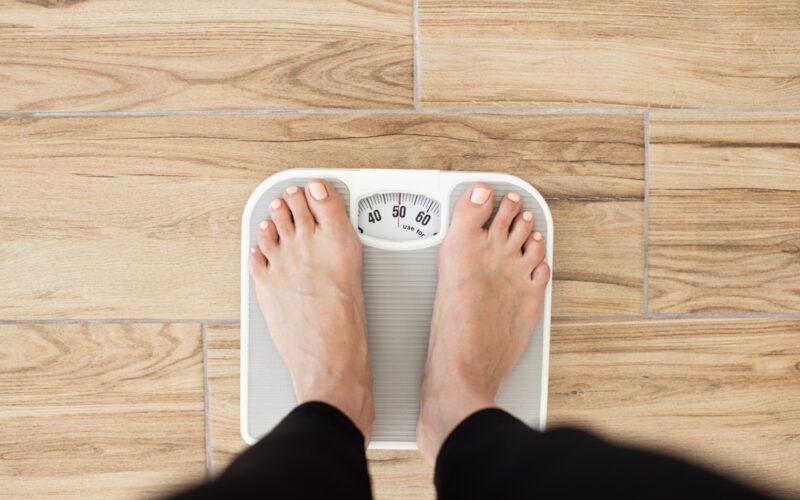Weight management becomes increasingly challenging as we age, with many experiencing a shift in body composition—gaining fat while losing muscle—despite maintaining similar habits. This phenomenon is partly related to hormonal changes, particularly the natural decline in growth hormone production that begins in our late 20s.
Sermorelin, a growth hormone-releasing hormone analog, stimulates the pituitary gland to increase natural growth hormone production. Unlike direct growth hormone therapy, Sermorelin works with your body’s existing systems, potentially offering a more balanced approach with fewer side effects.
How Does Sermorelin Affect Metabolism?
Sermorelin metabolism boost effects stem from its impact on growth hormone production. Growth hormone regulates how the body processes nutrients, builds tissues, and manages energy. When growth hormone levels decline with age, metabolic efficiency often decreases.
Growth hormone helps break down stored fat for energy use. By increasing growth hormone pulses, Sermorelin may enhance the body’s ability to mobilize fat stores, particularly from stubborn areas like abdominal fat. This process supports effective growth hormone and fat loss results.
While supporting fat breakdown, growth hormone simultaneously helps preserve and build lean tissue through enhanced protein synthesis. This dual action helps shift body composition rather than simply reducing scale weight.
Growth hormone helps regulate insulin sensitivity and glucose metabolism, potentially improving energy efficiency. Some users report increased energy levels, which may support weight management by enabling more consistent physical activity.
Sermorelin and Weight Loss: What Does the Research Say?
Research specifically examining Sermorelin for weight loss is still developing, with most evidence coming from broader studies on growth hormone’s effects on body composition.
Clinical studies on growth hormone therapy show significant reductions in visceral fat—the metabolically active fat surrounding internal organs. Since Sermorelin stimulates natural growth hormone production, similar effects might be expected, though more gradually.
Research has demonstrated that growth hormone administration in adults with growth hormone deficiency led to approximately 7-10% reductions in body fat mass, with most fat loss occurring in the abdominal region.
The most compelling research suggests that growth hormone’s effects on weight management are most significant when combined with lifestyle modifications. Studies show enhanced results when implemented alongside moderate caloric restriction and regular exercise.
Importantly, weight loss associated with growth hormone enhancement tends to be predominantly fat loss rather than muscle loss. This distinction is crucial for long-term metabolic health, as preserving lean mass helps maintain a higher basal metabolic rate.
Can Sermorelin Help with Muscle Preservation?
The relationship between Sermorelin and muscle mass is particularly relevant for adults concerned about age-related muscle loss or maintaining lean tissue during weight loss.
Growth hormone is anabolic by nature, supporting tissue building rather than breakdown. This makes Sermorelin valuable for preserving muscle mass during caloric restriction, when the body might otherwise break down muscle protein for energy.
Research on growth hormone therapy in older adults has demonstrated improvements in lean body mass, even without exercise interventions. A meta-analysis found that growth hormone treatment increased lean body mass by an average of 2.1 kg while reducing fat mass by a similar amount.
Sermorelin body composition effects may benefit middle-aged and older adults experiencing age-related muscle loss, individuals on calorie-restricted diets, athletes looking to optimize recovery, and those who have reached weight loss plateaus.
Beyond preserving existing muscle, Sermorelin may support muscle recovery and growth when combined with resistance training. By enhancing protein synthesis and tissue repair, it potentially allows for more efficient muscle development.
How to Use Sermorelin for Weight Management
Optimizing Sermorelin for weight loss requires a comprehensive approach:
Sermorelin is typically administered via subcutaneous injection, with dosages ranging from 200-500 mcg daily, often taken before bedtime. Dosage should always be personalized based on individual factors and from a licensed doctor.
Sermorelin works synergistically with exercise, particularly resistance training. Ideally, incorporate 2-3 resistance training sessions weekly, focusing on compound movements.
Nutritional strategies remain fundamental. Most practitioners recommend a moderate caloric deficit, adequate protein intake, emphasis on whole foods, and proper hydration.
Prioritize quality sleep, implement stress-reduction practices, and ensure adequate recovery between workouts to maximize benefits.
Body composition changes from Sermorelin typically develop gradually over 3-6 months. Regular monitoring can help track changes that may not be reflected on the scale.
Realistic expectations are essential. Sermorelin is not a quick-fix solution but rather a tool for optimizing hormonal environment to support healthier body composition over time.
Sermorelin vs. Other Weight Loss Treatments
Unlike direct growth hormone (HGH), Sermorelin stimulates your body’s natural growth hormone production. This approach offers advantages including more physiological hormone patterns, reduced risk of side effects, preserved pituitary function, and fewer regulatory restrictions.
Common weight loss drugs typically work through appetite suppression, fat blocking, or stimulating metabolism. Sermorelin’s approach differs by addressing hormonal influences on body composition, supporting muscle preservation while targeting fat loss.
While caloric restriction remains fundamental for fat loss, diet-only approaches often result in both fat and muscle loss. Sermorelin’s ability to help preserve muscle mass may help prevent metabolic adaptation and rebound weight gain.
Sermorelin is most effective when utilized as part of a comprehensive program rather than in isolation. Combining appropriate nutritional strategies, exercise, and lifestyle optimization typically yields superior results.
Conclusion
Sermorelin offers a promising approach to weight management by addressing hormonal changes that make weight control challenging with age. By supporting natural growth hormone production, Sermorelin may help enhance fat metabolism, preserve muscle mass, and optimize energy levels.
The most significant advantage appears to be its potential to address body composition rather than simply scale weight, helping shift the ratio of fat to muscle in a more favorable direction.
However, Sermorelin works gradually and synergistically with lifestyle factors. The most successful outcomes come from integrating it into a comprehensive approach that includes appropriate nutrition, regular exercise, quality sleep, and stress management.
If you’re interested in exploring whether Sermorelin might be appropriate for your weight management goals, schedule a consultation with Heally today.
Sources
NIH: Sermorelin: A better approach to management of adult-onset growth hormone insufficiency?
Healthline: What Is Sermorelin, and How Is It Used?
ScienceDirect: Sermorelin

